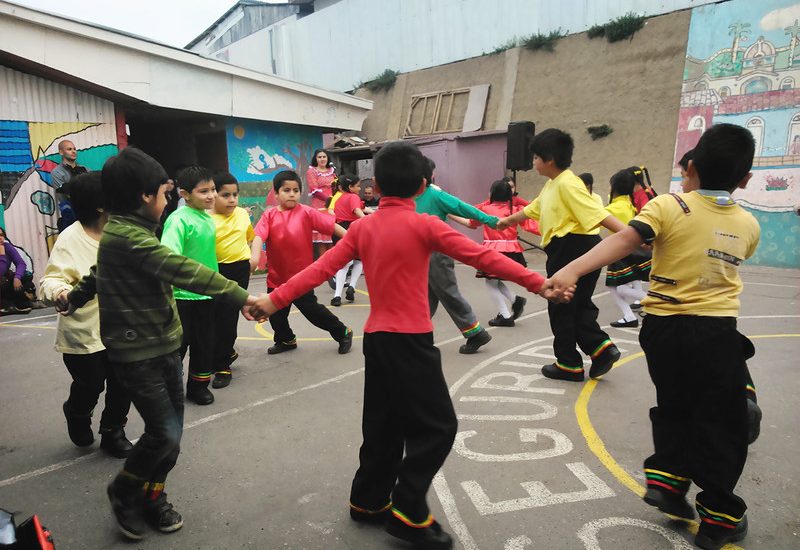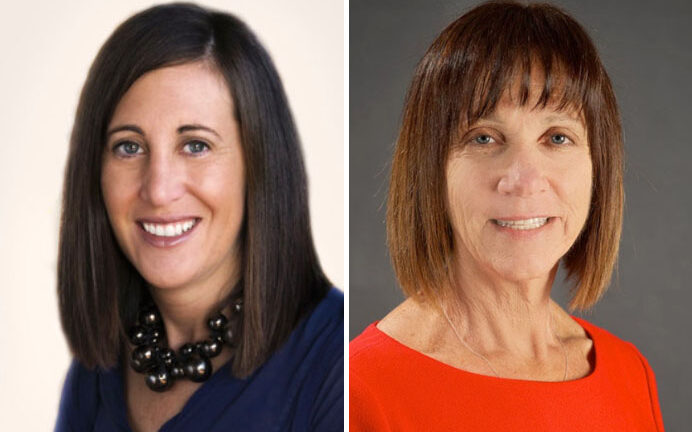
Students in public elementary schools in Valparaíso, Chile, are benefiting from a school monitoring and safety program developed by researchers at USC and Bar-Ilan University.
USC professor’s school safety model gains traction in South America
Education officials in South America are joining a growing list of regions that’ve embraced a USC school safety model.
An innovative approach to promoting safety and preventing violence in schools is being embraced in Valparaíso, Chile.
Education officials in the South American country are joining a growing list of regions around the world that have embraced a school mapping and monitoring system developed by researchers at the USC Suzanne Dworak-Peck School of Social Work and Bar-Ilan University in Israel.
Essentially, a scientific approach to understanding the specific challenges faced by individual classes, schools and districts, the model involves collecting detailed data to aid in reform efforts.
“This is not a top-down, prepackaged solution for reducing school violence and improving school climate,” said Verónica López, associate professor at Pontificia Universidad Católica de Valparaíso. “Instead it proposes a building-capacity perspective that seeks for school staff to become actively engaged in responding to school violence through locally designed solutions.”
An educational psychologist, López is part of a research team that has introduced the monitoring system in public elementary schools throughout Valparaíso. Although adapted for the local context, the model is based on the school safety work of Ron Astor, the Lenore Stein-Wood and William S. Wood Professor of School Behavioral Health at the USC Suzanne Dworak-Peck School of Social Work, and his longtime research partner, Rami Benbenishty, a professor at Bar-Ilan University.
For nearly three decades, Astor, Benbenishty and their colleagues have developed the data and mapping system with a particular emphasis on creating a flexible and hyper-focused approach to educational accountability.
Drilling down
“Every school is so different, even in the same communities,” Astor said. “One school might have name-calling issues, another might have weapon use, a third might have sexual harassment and abuse, and a fourth might have fights and bullying. We came to the conclusion that you need reliable data at the local level.”
Although López was familiar with Astor’s and Benbenishty’s work on school safety and violence, a chance encounter at an international conference led to an exchange of ideas. With funding from the Chilean government, López and her team, including researchers Mariana Bilbao and Paula Ascorra, visited the United States to learn more about the monitoring approach.
She also invited Astor, Benbenishty and other researchers to Chile to serve as consultants as they began developing a similar monitoring system in Valparaíso. Using survey data collected from students, school administrators and teachers, the system generates detailed reports that highlight specific issues in each school, even down to the classroom level.
“This is really a practice-based research project, where the aim is to help schools improve themselves rather than just gather information,” López said.
Although schools in the colorful seaside city struggle with many of the same issues as those in the United States and elsewhere, such as bullying and harassment, they also face unique challenges.
Highly stratified
Chile’s education system features three tiers of schools — public, private subsidized (similar to charter schools) and private. Most wealthy and middle-class families send their children to private schools, relegating kids with low socio-economic status to municipal schools.
Public schools in Valparaíso also have a tense relationship with their communities, López said, often viewing their lower-income surroundings as a menace and constructing physical and figurative walls to shield students from the neighborhood.
“That makes building community networks very difficult,” she said. “From a global perspective on how to improve school climate, that’s a very important issue that we still need to address.”
Ensuring that connections are made with community stakeholders is essential to improving school safety and reducing violence, said Diana Pineda, who worked with Astor to implement the school monitoring approach in San Diego County and currently serves as program director of Welcoming Practices that Address Transition Needs of Military Students in Public Schools, a collaborative effort to improve school climate for children from military-connected families.
Pineda spent a week and a half in Valparaíso in 2013, meeting with López and others to offer advice on collecting data, measuring school climate and collaborating with community groups, education officials, nongovernmental agencies and other partners.
“How do we engage schools within the community context, which is a critical component?” she said. “If you don’t engage the schools, the community and the parents, then it’s going to be really tough to sell.”
Punishing oversight
Another challenging aspect of the education system in Chile has been its disciplinary approach to accountability. Schools that are struggling can be forced to pay fines, lose resources from the government and have their principals replaced.
High-stakes testing raises the pressure on schools, López said, and those that don’t improve in terms of grade point averages and student performance on national language and math tests can be shuttered.
“We get a sense that the approach of educational authorities is more punitive toward schools than we see in other places, especially if we compare it to Israel,” said Benbenishty, who has worked with Astor to refine the school monitoring model in the Israeli education system for the past 25 years. “One of our goals is to develop ways of using accountability and monitoring to support schools, rather than punish them.”
The tide is slowly shifting toward that approach in Valparaíso, especially as school officials and community members become more familiar with the model.
“They really started acknowledging and recognizing the value of gathering data,” López said. “They talk about gathering valid data that they can trust and using it to make decisions.”
With their work in Valparaíso showing promise, López and her research team are now turning to a broader challenge — to revamp a longstanding life skills program delivered in nearly a third of all schools in Chile. Initially funded by the government to work with 12 school districts, the project swelled to 59 districts by the end of 2015.
As that process unfolds, the Chilean research team is continuing to rely on the expertise of Astor and Benbenishty. A recent grant from Chile’s government will allow both scholars to visit Chile, and Benbenishty is on sabbatical at USC this year to advance the collaboration among Bar-Ilan University, Chile and USC.
“It’s very reassuring to have the opportunity to learn from them and their experience,” López said. “It’s been very inspiring, and I believe they have also been inspired by us.”
Astor concurred and expressed hope that the project will eventually lead to the development of a nationwide school monitoring system in Chile that could serve as a model for other countries in the region.
“Many South American countries are following Chile’s leadership in this area,” he said. “We are continuing our meetings, connections and efforts to expand these monitoring methods in South America.


